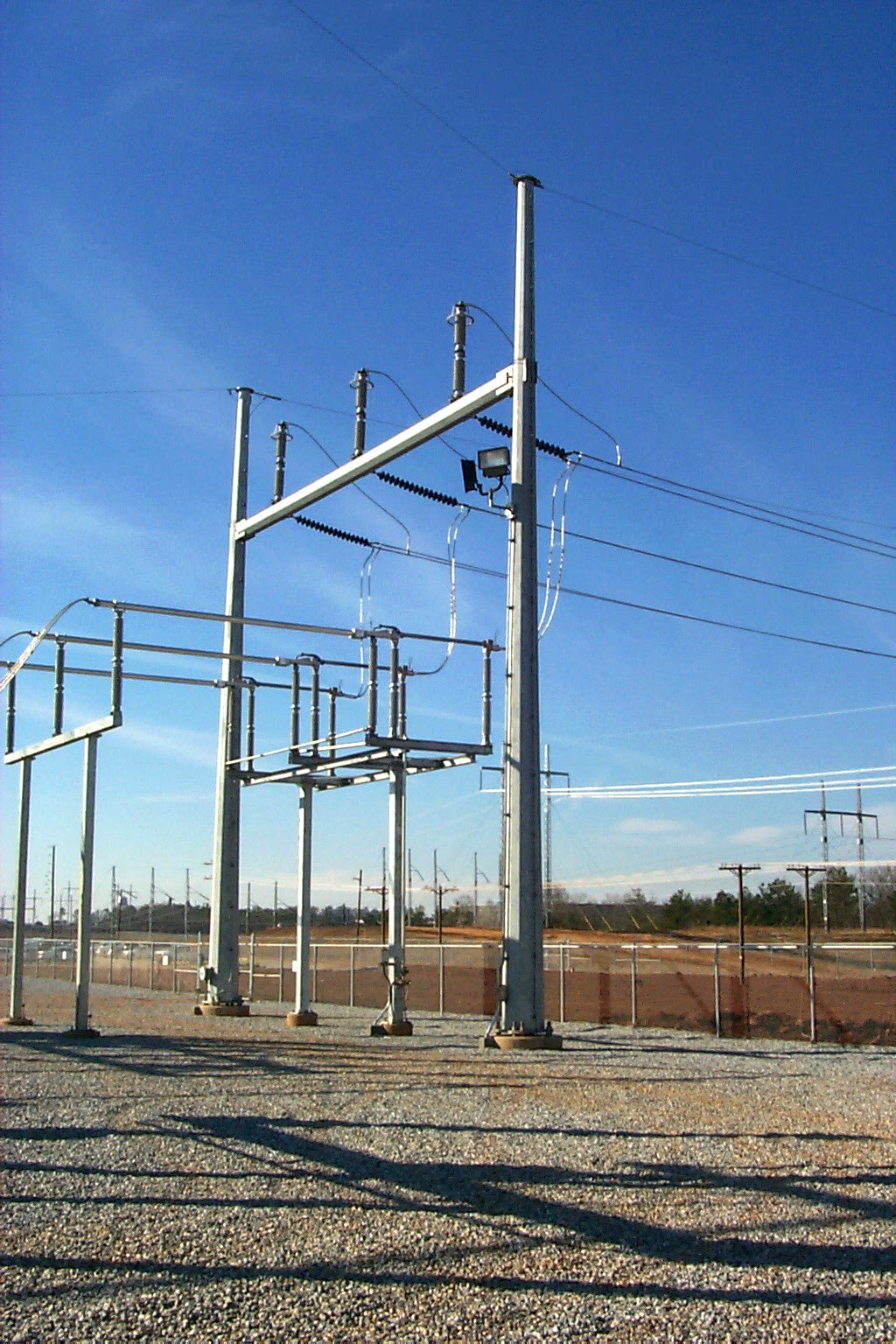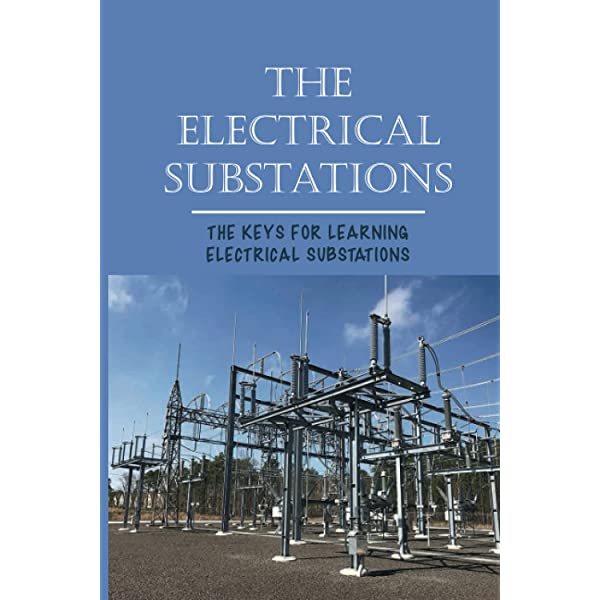A substation is a critical part of the electrical grid, and its design must take into account many factors to ensure reliability and safety. The first step in designing a substation is to determine the purpose of the substation and what equipment will be needed. The next step is to select a site that meets all the necessary requirements, such as space for equipment, access to power lines, and proximity to load centers.
Once the site is selected, the layout of the substation must be designed. This includes determining the placement of equipment, switches, transformers, and other components. The final step in designing a substation is to create detailed drawings and specifications that can be used by contractors to build the substation.
Substation Civil and Structure
If you’re in the process of designing a substation, there are a few key things to keep in mind. First and foremost, safety is paramount. The structure must be able to withstand extreme weather conditions and any potential hazards.
Second, it’s important to consider the future when designing the substation. It should be able to accommodate future expansion and new technologies. And lastly, aesthetics are also important.
The substation should be designed in a way that is pleasing to the eye and fits in with its surroundings.
With all of this in mind, here is a guide to help you design a safe and efficient substation:
1) Safety first: As mentioned before, safety is the number one priority when designing a substation.
The structure must be able to withstand high winds, heavy snowfall, earthquakes, and other potential hazards. It’s also important to have adequate lighting and security measures in place.
2) Consider the future: When designing the substation, it’s important to think about future expansion and new technologies that may come along.
The structure should be able to accommodate these things without needing major renovations or additions.
3) Aesthetics matter: Even though it’s not the most important thing, aesthetics are still something to consider when designing a substation. The goal is to create a structure that is pleasing to look at and fits in well with its surroundings.
Substation Structure Design Guide Pdf
Substation structure design is a critical component of any electrical grid. The purpose of a substation is to provide a safe and reliable means of transferring electrical power from one part of the grid to another. A well-designed substation will have a number of features that ensure its safety and reliability, including:
-A robust foundation that can support the weight of the substation equipment
-Sufficient clearance around the perimeter of the substation to allow for maintenance and repairs
-Proper ventilation to protect equipment from overheating
-An effective lighting system that allows for safe operations at night or during power outages
The guide provides detailed information on how to design a substation that meets these requirements. It includes discussions on topics such as load analysis, soil mechanics, foundation design, steel structures, and more.
Asce 113 Pdf
ASCE 113 is a document that provides pdf guidance on the design of steel storage racks. It includes information on rack capacity, column strength, beam deflection, and seismic design. This standard is intended for use by architects, engineers, and others who are responsible for the design of steel storage racks.
Asce 113 Pdf Free Download
ASCE 113 PDF FREE DOWNLOAD
Looking for a free and convenient way to view ASCE 113 pdfs? Look no further than PDF Download!
This lightweight program allows you to open, view, and print any PDF file – all without having to install any additional software. Simply download the program, associate it with your PDF files, and you’re ready to go! Best of all, PDF Download is absolutely free – there’s no need to register or provide any personal information.
So why wait? Get started today and see how easy it is to work with PDF files!
Electrical Substation Design Calculations Pdf
In an electrical substation, the design calculations involve the determination of the voltage and current levels, as well as the power flows and transformer tap settings. These calculations are necessary to ensure that the substation equipment can operate safely and reliably.
There are two types of voltage levels in an electrical substation: primary and secondary.
The primary voltage level is the highest voltage in the substation, while the secondary voltage level is lower. The difference between these twovoltages is called the transformation ratio. The primary voltage level is typically around 115 kV, while the secondary voltage level is around 12 kV.
The currents in an electrical substation must be kept within certain limits to prevent damage to equipment or fire hazards. The maximum allowable current depends on many factors, including the type of conductor material, insulation thickness, ambient temperature, and others. For example, copper has a higher ampacity than aluminum at high temperatures; however, aluminum has a higher ampacity than copper at low temperatures.
The power flow in an electrical substation must also be calculated to ensure that there is enough capacity to meet peak demands without overloading any equipment. This calculation takes into account both real and reactive power flows.
Substation Structures
A substation is a critical part of the electrical grid. It is where high-voltage transmission lines meet lower-voltage distribution lines, and it plays an important role in regulating the flow of electricity. A typical substation includes several key components:
– Transformers: Used to convert high-voltage electricity into a lower voltage that can be used by homes and businesses.
– Circuit breakers: Used to protect equipment from damage caused by sudden power surges.
– Capacitors: Store energy and help regulate the flow of electricity.
– Disconnect switches: Used to isolate equipment for maintenance or repair.
Substation Pdf
A substation is a critical part of the electricity grid. It is a collection of equipment that transforms, switches and protects the flow of electricity. Substations come in all shapes and sizes, from small rural distribution substations to large urban transmission substations.
The heart of every substation is the transformer. Transformers change (or transform) the voltage of electricity so it can be sent over long distances through high-voltage power lines. Substations also have devices called circuit breakers that protect equipment and prevent fires by automatically interrupting the flow of electricity when there are problems.
Substations are an essential part of our electric system, providing safe, reliable power to homes and businesses across Canada.

Credit: www.distransteel.com
What are the Design Requirements for a Substation Structure
A substation is a critical part of the electrical grid, and its design must take into account a number of factors to ensure reliable operation. The first step in designing a substation is to determine the maximum voltage and current that will be present. This information will be used to select the proper equipment and materials for the substation.
The next step is to develop a layout for the substation. This layout must take into account the space required for all of the equipment, as well as any safety considerations. Once the layout is complete, the electrical components can be installed.
Finally, the substation must be tested to ensure that it meets all of the necessary requirements.
How Do You Account for Environmental Loads When Designing a Substation Structure
When designing a substation structure, engineers must account for environmental loads such as wind, earthquakes, and snow. The first step is to determine the design criteria for the structure. The next step is to select a structural system that can resist the applied loads.
Finally, the engineer must verify that the selected system can support the environmental loads.
What are Some Common Structural Problems That Can Occur in a Substation
One of the most common structural problems that can occur in a substation is corrosion. This can be caused by many factors, including exposure to the elements, improper maintenance, and faulty equipment. If left unchecked, corrosion can lead to serious problems, such as electrical shorts, fires, and even explosions.
Another common problem is foundation failure. This can be caused by a number of factors, including poor soil conditions, inadequate drainage, and seismic activity. If not addressed promptly, foundation failure can cause extensive damage to the substation and its surrounding structures.
Other common problems that can occur in a substation include roof leaks, wall cracks, and window breaks. These problems can often be attributed to poor design or construction quality. In some cases, they may also be due to age or wear and tear.
Conclusion
The purpose of this blog post is to provide a guide for designing substation structures. The guide includes information on how to determine the loads that need to be supported by the structure, how to design the foundation, and how to choose the appropriate materials.



